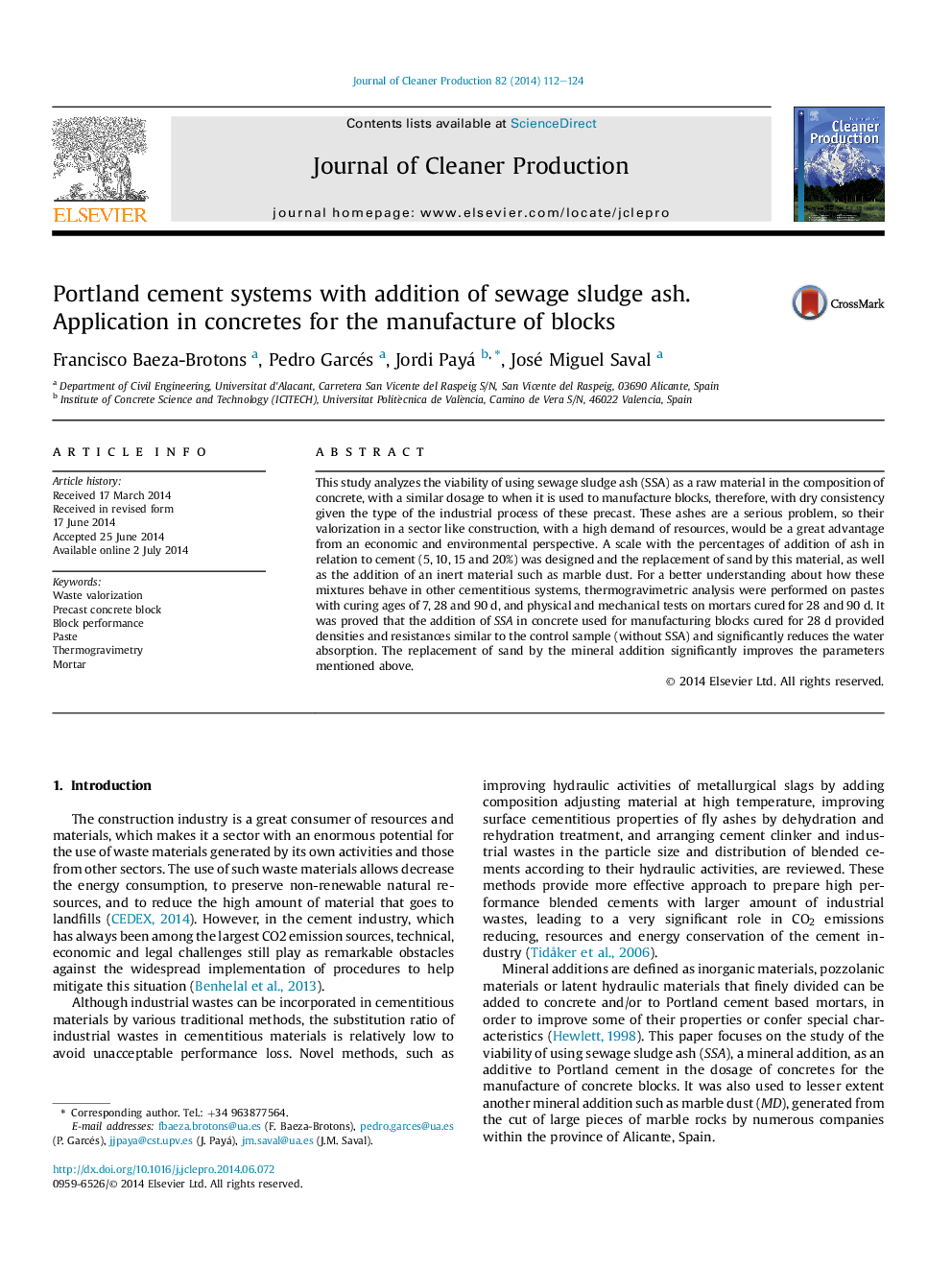| Article ID | Journal | Published Year | Pages | File Type |
|---|---|---|---|---|
| 8105740 | Journal of Cleaner Production | 2014 | 13 Pages |
Abstract
This study analyzes the viability of using sewage sludge ash (SSA) as a raw material in the composition of concrete, with a similar dosage to when it is used to manufacture blocks, therefore, with dry consistency given the type of the industrial process of these precast. These ashes are a serious problem, so their valorization in a sector like construction, with a high demand of resources, would be a great advantage from an economic and environmental perspective. A scale with the percentages of addition of ash in relation to cement (5, 10, 15 and 20%) was designed and the replacement of sand by this material, as well as the addition of an inert material such as marble dust. For a better understanding about how these mixtures behave in other cementitious systems, thermogravimetric analysis were performed on pastes with curing ages of 7, 28 and 90Â d, and physical and mechanical tests on mortars cured for 28 and 90Â d. It was proved that the addition of SSA in concrete used for manufacturing blocks cured for 28Â d provided densities and resistances similar to the control sample (without SSA) and significantly reduces the water absorption. The replacement of sand by the mineral addition significantly improves the parameters mentioned above.
Related Topics
Physical Sciences and Engineering
Energy
Renewable Energy, Sustainability and the Environment
Authors
Francisco Baeza-Brotons, Pedro Garcés, Jordi Payá, José Miguel Saval,
